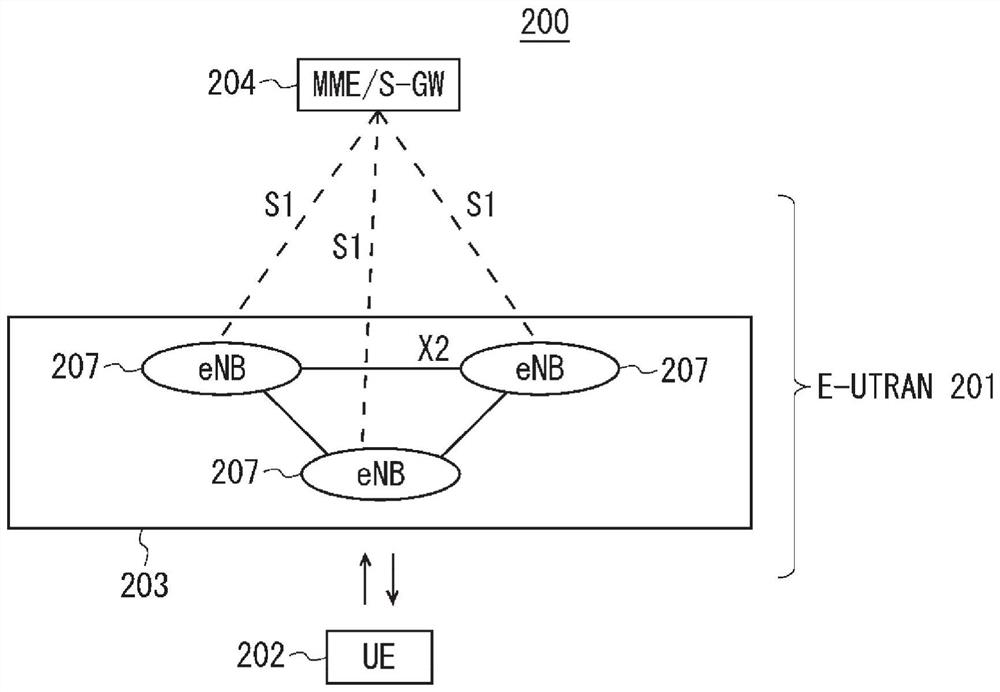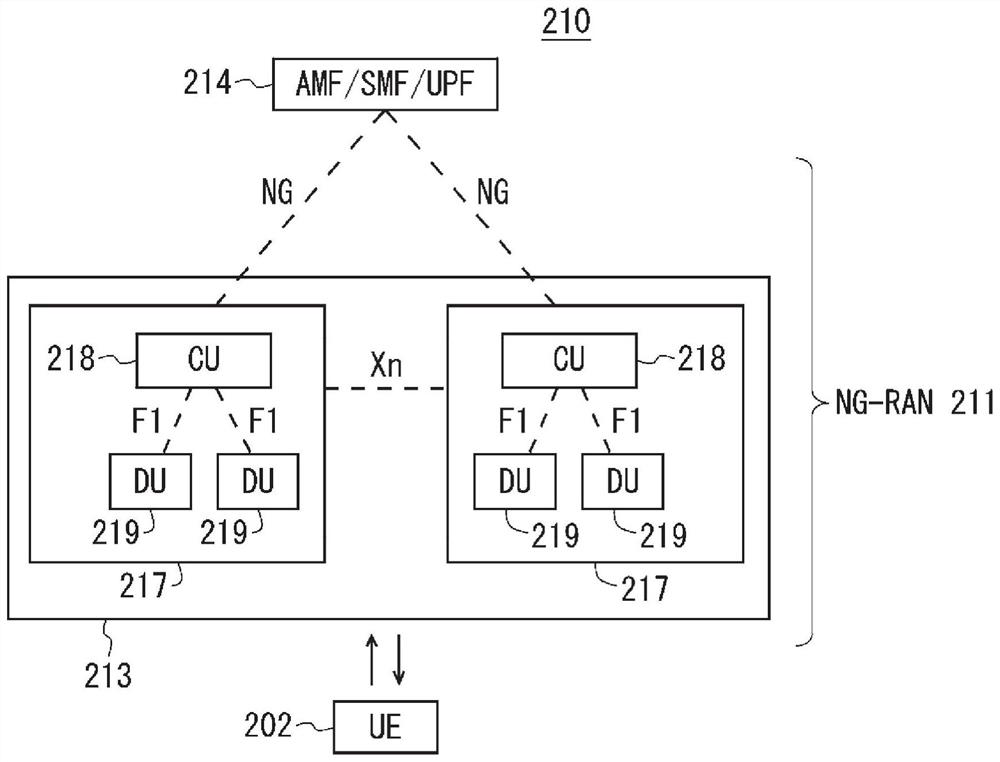Communication system and receiving-side device
A communication system, technology on the receiving side, applied in the directions of synchronization devices, transmission systems, wireless communication, etc., can solve problems such as conflicts
- Summary
- Abstract
- Description
- Claims
- Application Information
AI Technical Summary
Problems solved by technology
Method used
Image
Examples
Embodiment approach 1
[0136] figure 2 It is a block diagram showing the overall configuration of an LTE-based communication system 200 discussed in 3GPP. right figure 2 Be explained. The radio access network is called E-UTRAN (Evolved Universal Terrestrial Radio Access Network: Evolved Universal Terrestrial Radio Access Network) 201 . A mobile terminal device (hereinafter referred to as "mobile terminal (User Equipment: UE)")_202, which is a communication terminal device, can perform wireless communication with a base station device (hereinafter referred to as "base station (E-UTRAN NodeB: eNB)")_203. Communication performs sending and receiving of signals.
[0137] Here, the "communication terminal device" refers not only to a mobile terminal device such as a mobile phone terminal device but also to non-moving devices such as sensors. In the following description, a "communication terminal device" may be simply referred to as a "communication terminal".
[0138] If the control protocol for ...
example 2
[0357] In Embodiment 1 and Modification 1 of Embodiment 1, the case where packet replication is used is disclosed as an example of a method satisfying URLLC requirements, but repetition (repetition) may also be used.
[0358] However, in the repetition, the HARQ feedback transmission from the receiving side apparatus is performed after the completion of the transmission for a predetermined number of repetitions. As a result, the receiving side apparatus receives data in the middle of the predetermined number of repetitions, and even if it cannot be correctly demodulated and decoded, the receiving side apparatus waits for the remaining number of times of reception before performing HARQ feedback. The same applies to the transfer to the upper layer (for example, RLC) of the received data to the receiving side device. As a result, there is a problem that the delay in the data transmission deteriorates.
[0359] Solutions to the above-mentioned problems are disclosed below.
[0...
Embodiment approach 2
[0469] In the NR cell, the dormant state shown in Non-Patent Document 24 (TS36.321 V15.2.0) can be applied. The UE can use the MAC signaling from the gNB to transfer the communication state with the cell of the gNB to the dormant state, or to the active state.
[0470] However, when a cell configured for packet copying using CA is in a dormant state, the gNB needs to notify the UE of MAC signaling for releasing the dormant state before packet copy communication. As a result, communication of packet duplication starts late, resulting in a problem that delay increases.
[0471] Solutions to the above problems are disclosed.
[0472] For a unit that is configured with group replication, the sleep state can be disabled if it is not set to sleep state. A timer used to implicitly transfer a cell to a dormant state may be disabled. A timer for implicitly stopping communication of a dormant SCell (for example, a dormant SCell Deactivation Timer disclosed in Non-Patent Document 24) ...
PUM
 Login to View More
Login to View More Abstract
Description
Claims
Application Information
 Login to View More
Login to View More - R&D
- Intellectual Property
- Life Sciences
- Materials
- Tech Scout
- Unparalleled Data Quality
- Higher Quality Content
- 60% Fewer Hallucinations
Browse by: Latest US Patents, China's latest patents, Technical Efficacy Thesaurus, Application Domain, Technology Topic, Popular Technical Reports.
© 2025 PatSnap. All rights reserved.Legal|Privacy policy|Modern Slavery Act Transparency Statement|Sitemap|About US| Contact US: help@patsnap.com



